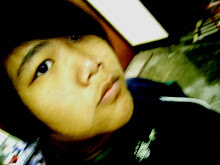Named after its designer, engineer Gustave Eiffel, the Eiffel Tower is the tallest building in Paris. More than 200,000,000 people have visited the tower since its construction in 1889,including
6,719,200 in 2006,making it the most visited paid monument in the world.Including the 24 m (79 ft) antenna, the structure is 325 m (1,063 ft) high (since 2000), which is equivalent to about 81 levels in a conventional building.
Eiffel Tower October 2007
When the tower was completed in 1889 it was the world's tallest tower — a title it retained until 1930 when New York City's Chrysler Building (319 m — 1,047 ft tall) was completed.The tower is now the fifth-tallest structure in France and the tallest structure in Paris, with the second-tallest being the Tour Montparnasse (210 m — 689 ft), although that will soon be surpassed by Tour AXA (225.11 m — 738.36 ft).
Eiffel Tower from the neighborhood.
The metal structure of the Eiffel Tower weighs 7,300 tonnes while the entire structure including non-metal components is approximately 10,000 tonnes. Depending on the ambient temperature, the top of the tower may shift away from the sun by up to 18 cm (7 in) because of thermal expansion of the metal on the side facing the sun. The tower also sways 6–7 cm (2–3 in) in the wind.[3] As demonstration of the economy of design, if the 7300 tonnes of the metal structure were melted down it would fill the 125 meter square base to a depth of only 6 cm (2.36 in), assuming a density of the metal to be 7.8 tonnes per cubic meter. The tower has a mass less than the mass of the air contained in a cylinder of the same dimensions,[7] that is 324 meters high and 88.3 meters in radius. The weight of the tower is 10,100 tonnes compared to 10,265 tonnes of air.
The first and second levels are accessible by stairways and lifts. A ticket booth at the south tower base sells tickets to access the stairs which begin at that location. At the first platform the stairs continue up from the east tower and the third level summit is only accessible by lift. From the first or second platform the stairs are open for anyone to ascend or descend regardless of whether they have purchased a lift ticket or stair ticket. The actual count of stairs includes 9 steps to the ticket booth at the base, 328 steps to the first level, 340 steps to the second level and 18 steps to the lift platform on the second level. When exiting the lift at the third level there are 15 more steps to ascend to the upper observation platform. The step count is printed periodically on the side of the stairs to give an indication of progress of ascent. The majority of the ascent allows for an unhindered view of the area directly beneath and around the tower although some short stretches of the stairway are enclosed.
Maintenance of the tower includes applying 50 to 60 tonnes of paint every seven years to protect it from rust. In order to maintain a uniform appearance to an observer on the ground, three separate colors of paint are used on the tower, with the darkest on the bottom and the lightest at the top. On occasion the colour of the paint is changed; the tower is currently painted a shade of brownish-grey. On the first floor there are interactive consoles hosting a poll for the colour to use for a future session of painting. The co-architects of the Eiffel Tower are Emile Nouguier, Maurice Koechlin and Stephen Sauvestre.
วันศุกร์ที่ 26 ธันวาคม พ.ศ. 2551
วันพฤหัสบดีที่ 18 ธันวาคม พ.ศ. 2551
Christmas

Christmas Day or Christmastide, is an annual holiday celebrated on December 25 that marks and honors the birth of Jesus of Nazareth.[2][3] The birth of Jesus, which is the basis for the anno Domini system of dating, is thought to have occurred between 7 and 2 BC.[4] December 25 is not thought to be Jesus' actual date of birth, and the date may have been chosen to correspond with either a Roman festival,[5] or with the winter solstice.[6]Modern customs of the holiday include gift-giving, church celebrations, and the display of various decorations—including the Christmas tree, lights, mistletoe, nativity scenes and holly. Santa Claus (also referred to as Father Christmas, although the two figures have different origins) is a popular mythological figure often associated with bringing gifts at Christmas. Santa is generally believed to be the result of a syncretization between St. Nicholas of Myra and elements from pagan Nordic and Christian mythology, and his modern appearance is believed to have originated in 19th century media.
Christmas is celebrated throughout the Christian population, but is also celebrated by many
non-Christians as a secular, cultural festival. The holiday is celebrated around the world. Because gift-giving and several other aspects of the holiday involve heightened economic activity among both Christians and non-Christians, Christmas has become a major event for
วันอังคารที่ 9 ธันวาคม พ.ศ. 2551
Le Futur Proche
Le Futur Proche
คือ เป็น temps ที่บอกเวลาในอนาคตอันใกล้
อย่างเช่น ในอีกไม่กี่ชั่วโมง เป็นต้นโครงสร้าง temps คือ
V.aller + inf.
V.aller กระจายเป็น présent แล้วตามด้วย V.inf. เช่น
V.partir.
Je vais partir.
Tu vas partir.
Il / Elle va partir.
Nous allons partir.
Vous allez partir.
Ils / Elles vont partir.
คือ เป็น temps ที่บอกเวลาในอนาคตอันใกล้
อย่างเช่น ในอีกไม่กี่ชั่วโมง เป็นต้นโครงสร้าง temps คือ
V.aller + inf.
V.aller กระจายเป็น présent แล้วตามด้วย V.inf. เช่น
V.partir.
Je vais partir.
Tu vas partir.
Il / Elle va partir.
Nous allons partir.
Vous allez partir.
Ils / Elles vont partir.
สมัครสมาชิก:
ความคิดเห็น (Atom)
MERCI ...!!!!
เพื่อนๆและทุกท่านที่เข้ามาเยี่ยมเยือนกันนะฮับ
แล้วแวะมาบ่อยๆนะฮับ
)0_0)+++++++++++(0_0(
เพื่อนๆและทุกท่านที่เข้ามาเยี่ยมเยือนกันนะฮับ
แล้วแวะมาบ่อยๆนะฮับ
)0_0)+++++++++++(0_0(






